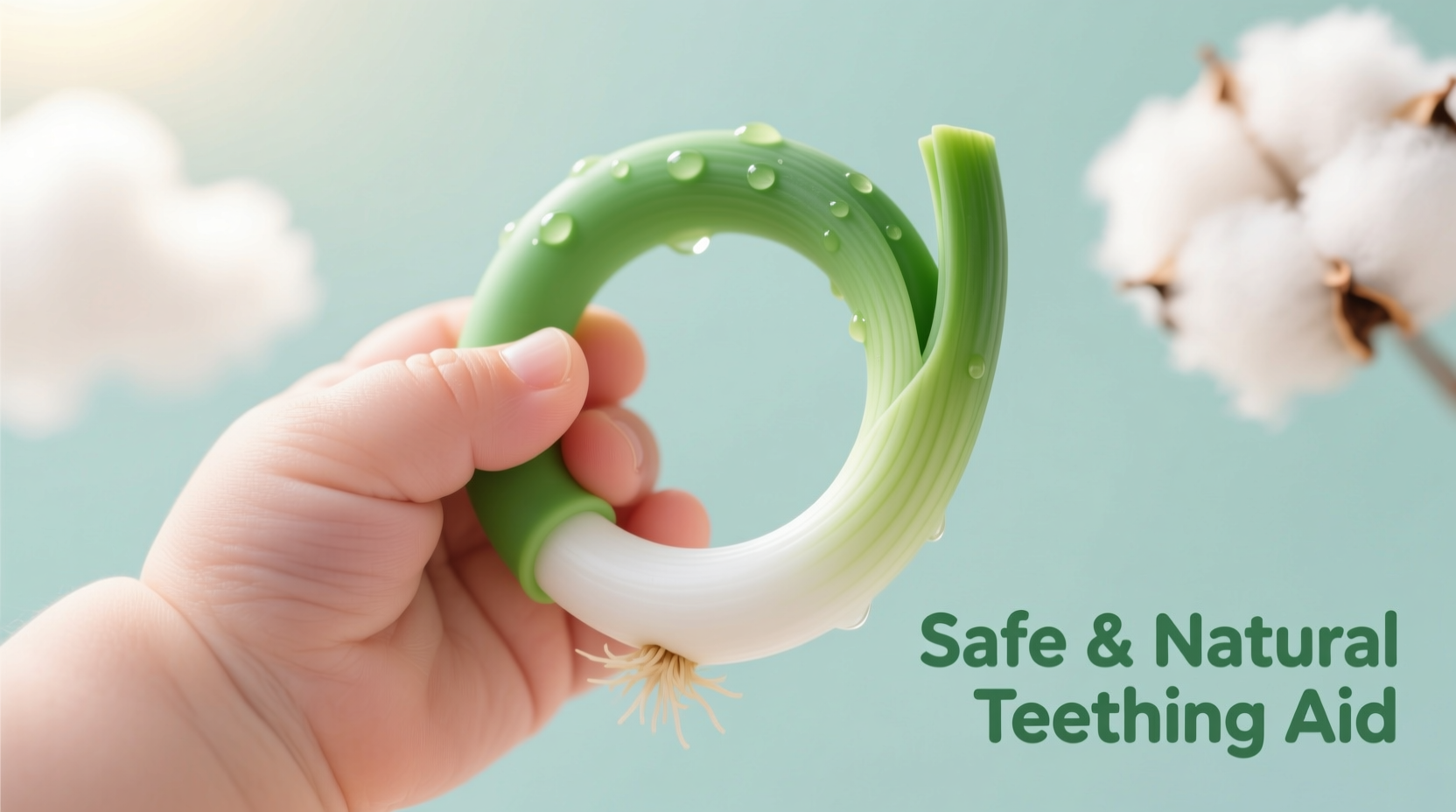Parents searching for natural teething remedies often encounter the traditional practice of using green onion stems. While this method has circulated through generations in some cultures, modern medical evidence reveals serious safety concerns that outweigh any potential benefits for infants.
Understanding the Green Onion Teething Tradition
Historically, some cultures have used raw green onion stems as a teething aid, believing the cool texture provides soothing relief for sore gums. The practice typically involves giving babies a fresh green onion stalk to chew on, with proponents claiming the mild cooling sensation and firm texture helps alleviate teething discomfort.
Food anthropologists like Lisa Chang have documented this practice in certain Asian and Eastern European communities, where traditional home remedies often incorporate readily available kitchen ingredients. However, cultural tradition doesn't equate to medical safety, especially for vulnerable infants.
Medical Perspective on Safety Risks
The American Academy of Pediatrics (AAP) explicitly warns against using green onion or similar fresh produce for teething due to multiple safety concerns:
- Choking hazard - Green onion stems can break into small, slippery pieces that infants might inhale
- Oral irritation - The natural compounds in raw onions may cause gum irritation rather than relief
- Bacterial contamination - Fresh produce carries risk of pathogens harmful to infants
- Lack of evidence - No scientific studies support effectiveness for teething pain
| Teething Method | Safety Rating | Medical Support | Choking Risk |
|---|---|---|---|
| Green onion stems | Unsafe | None | High |
| Chilled teething rings | Safe | Strong | Low |
| Clean damp washcloth (chilled) | Safe | Moderate | Very Low |
| Over-the-counter teething gels | Caution | Limited | None |
What Pediatric Experts Recommend Instead
Rather than risking dangerous home remedies, the AAP recommends evidence-based approaches for teething relief:
- Chilled (not frozen) teething rings - The cool temperature provides soothing relief without numbing effects
- Clean damp washcloths - Refrigerated (not frozen) for gentle gum massage
- Finger massage - Using clean fingers to apply gentle pressure on sore gums
- Teething biscuits - Only under direct supervision for older infants who can sit unassisted
The Centers for Disease Control and Prevention (CDC) emphasizes that choking is a leading cause of non-fatal injury among infants, making it critical to avoid any teething methods that could break into small pieces.

When to Consult Your Pediatrician
Teething discomfort is normal, but certain symptoms require medical attention:
- Fever higher than 101°F (38.3°C)
- Excessive drooling causing skin irritation
- Refusal to eat or drink for more than 8 hours
- Bleeding gums or facial swelling
Your pediatrician can recommend appropriate pain relief options and rule out other potential causes of discomfort. Never use medications not specifically approved for infant teething without consulting your healthcare provider.
Evidence-Based Teething Timeline
Understanding normal teething progression helps distinguish typical discomfort from concerning symptoms:
- 3-7 months: First teeth begin forming beneath gums
- 6-10 months: Lower central incisors typically emerge
- 8-12 months: Upper central incisors appear
- 9-13 months: Upper lateral incisors come in
- 10-16 months: Lower lateral incisors emerge
- 16-22 months: Canines and molars continue developing
This timeline from the American Academy of Pediatrics shows that teething discomfort typically lasts only a few days per tooth, not continuously for months as some parents believe.
Safe Natural Remedies Worth Considering
If you prefer natural approaches, these evidence-supported options provide safer relief:
- Chilled fruit mesh feeders - Fill with frozen breast milk or water (always supervise)
- Gentle gum pressure - Use clean finger with light circular motions
- Cold foods - For older infants eating solids, chilled (not frozen) banana or cucumber
- Extra comfort - Increased holding and soothing during particularly uncomfortable periods
Remember that teething discomfort varies significantly between infants. What works for one baby might not help another, so having multiple safe options available is wise.
Conclusion: Prioritizing Infant Safety
While the green onion teething method persists in some cultural traditions, modern medical evidence clearly shows it poses unnecessary risks to infants. The potential choking hazard and lack of proven benefits make this practice unsafe compared to evidence-based alternatives recommended by pediatric experts.
When addressing teething discomfort, always prioritize safety over convenience or tradition. Consult your pediatrician before trying any new teething remedy, and never leave your baby unattended with any object in their mouth. By choosing medically approved methods, you can provide effective relief while keeping your infant safe during this developmental stage.











 浙公网安备
33010002000092号
浙公网安备
33010002000092号 浙B2-20120091-4
浙B2-20120091-4